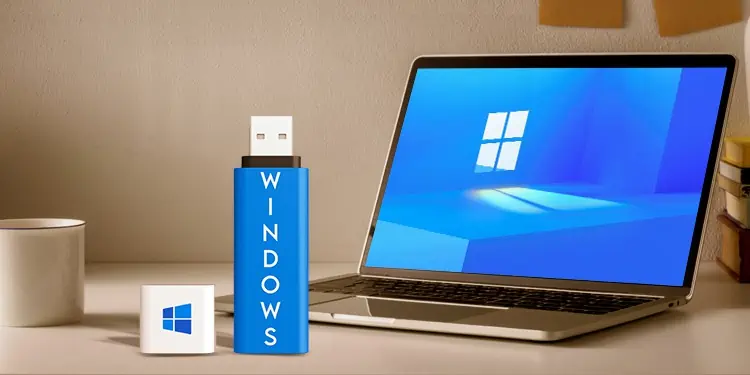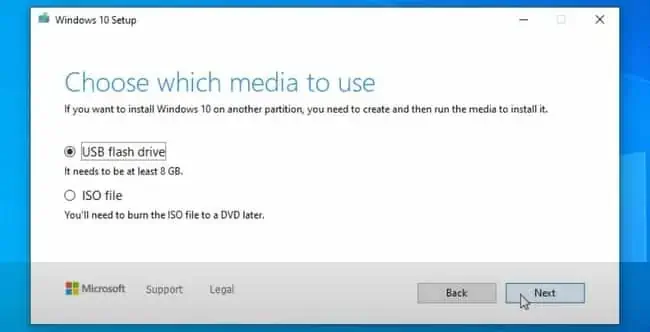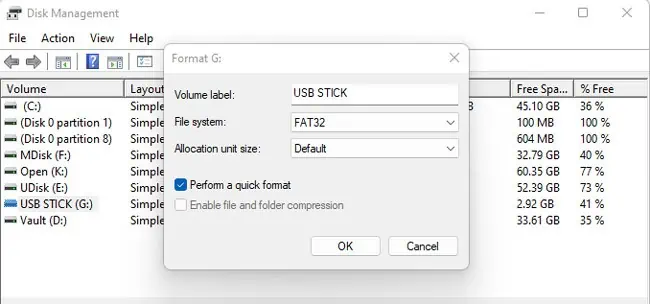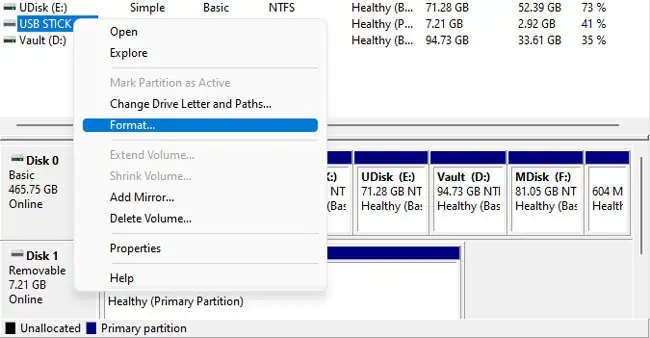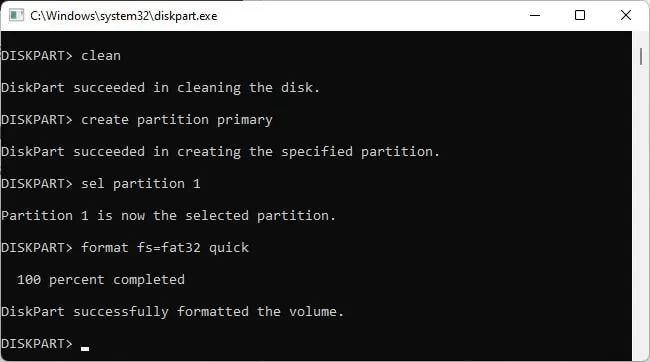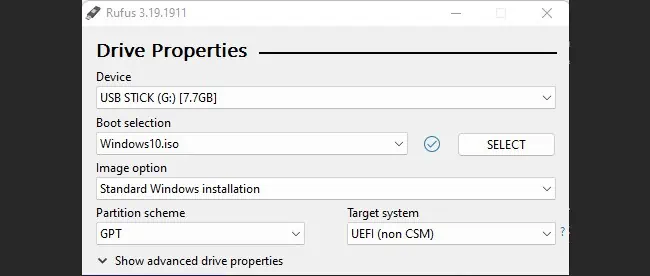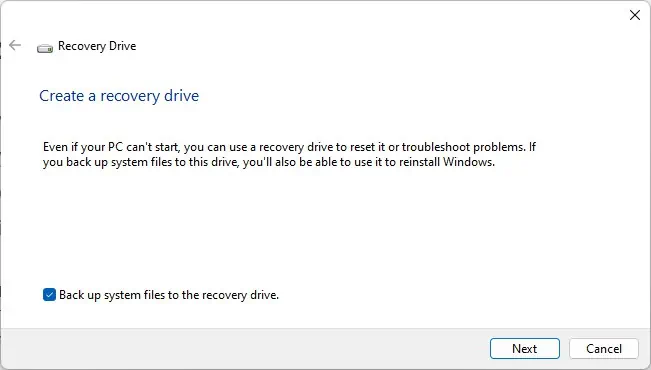Having a bootable USB Flash Drive on hand is a good idea in case you ever need to troubleshoot booting issues or simply install Windows.
Windows offers multiple ways to create bootable USBs, from native tools like Diskpart and official ones like the Media Creation Tool to popular third-party options like Rufus.
Ultimately, these are all very straightforward to use, but certain methods will be better suited for certain cases. As such, we’ve detailed the steps for all three so that you can use the one best suited for your specific circumstances.
How to Create a Bootable USB
If you’re trying to create a bootable Windows USB on Windows, you can use the Media Creation Tool. This will flash the USB with the latest Windows version. In case you’re trying to use the ISO of a specific version, you can instead use Diskpart.
And finally, if you want to create a bootable Linux or Mac USB in Windows, you can use Rufus. For Windows USBs, you’ll want an 8GB USB at the minimum, while the requirements for Linux will be lower depending on the distro.
Using Media Creation Tool
As the Media Creation Tool is very simple to use, we’ll discuss that first. Here are the steps to create a bootable USB with this tool:
- Connect the USB to your PC if you haven’t already.
- Download and launch the Media Creation Tool.
- Accept the license agreement and select the Create installation media option.

- Select USB Flash Drive and press Next.

- The creation tool will now burn the ISO onto the USB.
Using Disk Management / Diskpart
This method isn’t very popular, but it still has some use cases, such as when an internet connection is unavailable. Here’s how you can create a bootable USB using Disk Management:
- Press Win + R, type
diskmgmt.msc, and press Enter. - Right-click the USB and select Format.

- Select FAT32 as the filesystem and format the USB.
- Afterward, right-click the USB and select Mark Partition as Active. In case this option is grayed out, check the next section.

- Mount the ISO and copy its contents to the USB.
The Mark Partition as Active option won’t be accessible on GPT drives. In such cases, you can use diskpart to set the USB as active. Here are the steps for this:
- Press Win + R, type
cmd, and press CTRL + Shift + Enter. - Execute the following commands:
diskpartlist disk
- Type
select disk #, replace # with the drive number or letter of the USB drive, and press Enter. - Use the commands listed below to format the USB as FAT32 and create a primary partition. If you already did this earlier, skip this part and move on to Step 5:
cleancreate partition primaryselect partition 1format fs=fat32 quick
- Execute the following commands:
activeexit - Now mount the ISO and copy the contents to the USB.
Using Rufus
Rufus is an excellent third-party utility for creating bootable USB drives and Live USBs on Windows. Assuming you’ve downloaded Rufus, here are the steps to use it:
- Launch Rufus and select the USB.
- Click on the SELECT button and select the ISO.

- Specify the preferences such as OS version, partition scheme, etc.
- Once you’re satisfied, press the Start button.

- Rufus will now create the installation media with the preferences you’ve chosen.
How to Create A Recovery Drive?
A Windows recovery drive can come in handy if you ever face booting issues. The recovery drive will allow you to access recovery options, which you can use to try and restore the system to a working state. If you back up system files to the drive, you can even use it to reinstall Windows.
Microsoft recommends using a USB Drive that’s at least 16 GBs for this purpose. In some cases, you might need a USB with even higher capacity. With that said, here are the necessary steps:
- Connect the USB to your PC if you haven’t already.
- Press Win + R, type
recoverydrive, and press Enter. - Enable the Backup system files option and press Next.

- Select the USB Drive and press Next > Create.

- After the recovery drive is created, you’ll have the option to keep or remove the recovery files on your PC. As long as you store the Recovery USB safe, it’s fine to delete the files on the PC.

